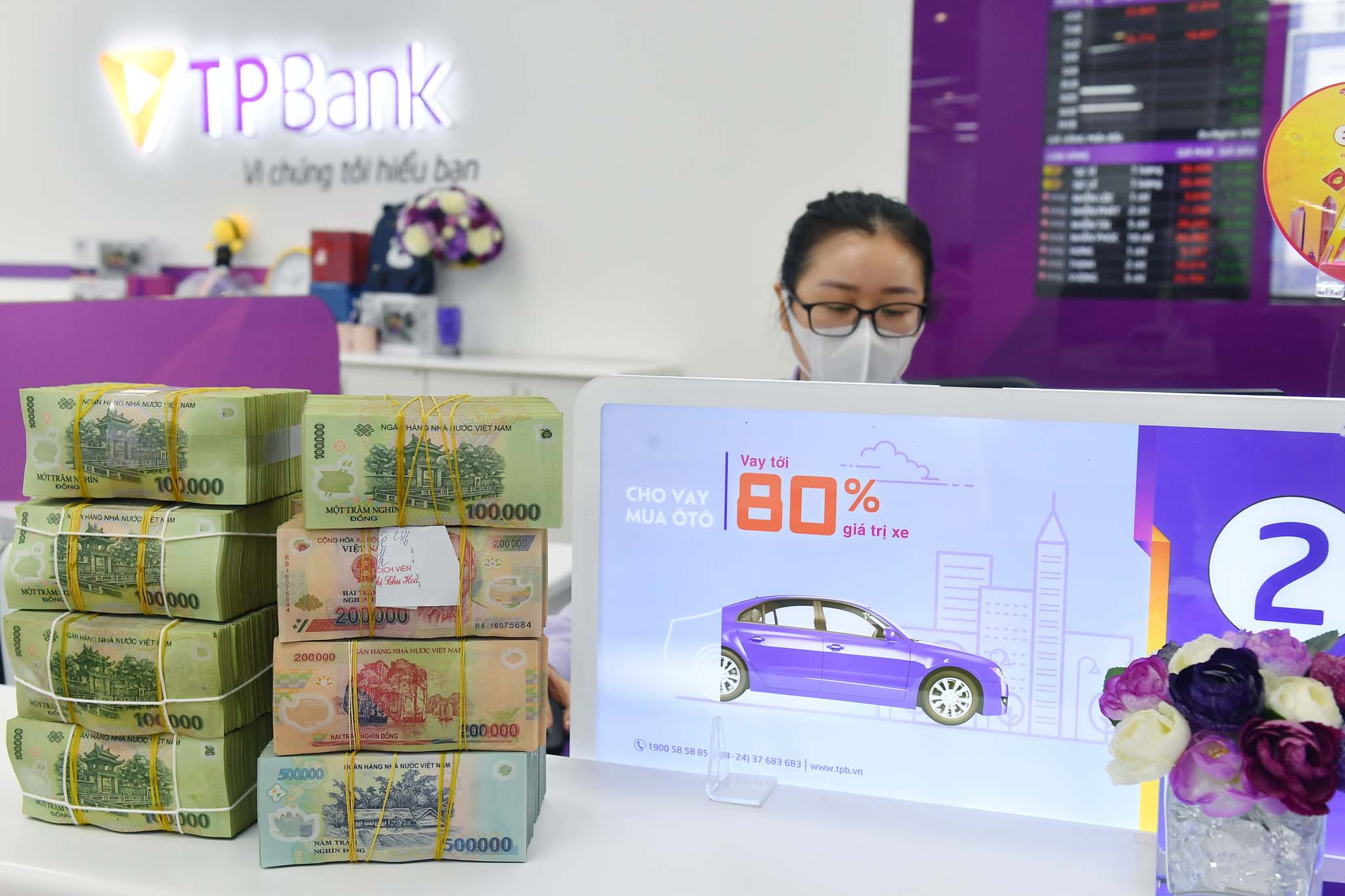
However, it said that despite great efforts, the lending interest rates remain high, because commercial banks are still the major capital channel for the national economy.
Moreover, the banking system is facing pressure in both Vietnam and the international market.
While demand for capital is increasing rapidly, capital mobilization has not increased proportionally.
The amount of capital mobilized by April 27 had increased by 1.78 percent, or 50 percent of the credit growth rate of 3.04 percent.
Vietnam’s economy relies on bank credit. The ratio of credit to GDP at the end of 2022 was 125.3 percent, while the demand for capital was always at a high level, putting pressure on lending interest rates.
After Covid-19, the economy began recovering, so demand for production and business has increased.
SBV said the difference between VND deposits and credit is VND167 trillion.
The ratio of credit to mobilized capital in the tier-1 market in VND is at 101.45 percent, lower than the 102.28 percent in late 2022, but is still at a high level.
Meanwhile, commercial banks’ mobilized capital is mostly short-term capital (88 percent of deposits are 12-month or shorter-term ones). But they still have to satisfy demand for medium- and long-term capital (more than 52 percent of VND credit in the banking system is medium and long-term). This puts pressure on deposit interest rates.
“The inflationary pressure exists, and people expect positive interest rates, which makes it difficult for credit institutions to ease interest rates to attract deposits, so the input cost is always high,” SBV explained.
Capital mobilized by April 27 had grown by 1.78 percent, just 50 percent of the credit growth rate of 3.04 percent.
Analysts said in general, the pressure to increase interest rates exists because Vietnam is an economy with high openness, which means that any fluctuation in the world’s financial and monetary markets has a quick and strong impact on Vietnam’s interest and exchange rates.
The interest rates increased in 2022 and continued to stay high in the first months of 2023. Large central banks continued their plans on tightening monetary policy and maintaining high interest rates.
The US FED has raised prime interest rates 10 times. Currently, the FED Fund target interest rate is at 5-5.25 percent per annum.
ECB has set the refinancing interest rate at 3.5 percent per annum and deposit interest rate at 3.0 percent per annum.
In addition, inflationary pressure in Vietnam is also keeping interest rates high. The average interest rate in the first four months of 2023 was 3.84 percent.
The core inflation rate increased by 4.9 percent, and the target inflation rate is 4.5 percent in 2023.
SBV’s Circular 02/2023/TT-NHNN released April 23 restructure the debt payment deadline and keeps the group of debts unchanged applied to clients facing difficulties.
This means that credit institutions are not collecting due debts, while they still have to pay interest rate and deposits to depositors, thus putting pressure on the capital balance.
The banking system is still undergoing the restructuring process and debt resettlement, upgrading the administration to international practice.
Some commercial banks have to maintain deposit interest rates at high levels to retain clients. This is also another reason that makes it more difficult to cut lending interest rates.
Under the current regulations, lending interest rates are determined commercial banks and borrowers (clients, including individuals) after negotiations, based on the capital supply and demand in the market and the clients’ credit ranking.
In case the interest rates fluctuate or the central banks adjust regulating interest rates, credit institutions may raise or lower deposit interest rates, or credit institutions take initiative in lowering lending interest rates.
According to SBV, interest rates have become stable with many banks having slashed interest rates. New commercial loans bear the interest rates of 9.3 percent per annum, a decrease of 0.65 percent compared with late 2022, while the new deposit interest rate 6.3 percent, down 0.18 percent.
Duy Anh